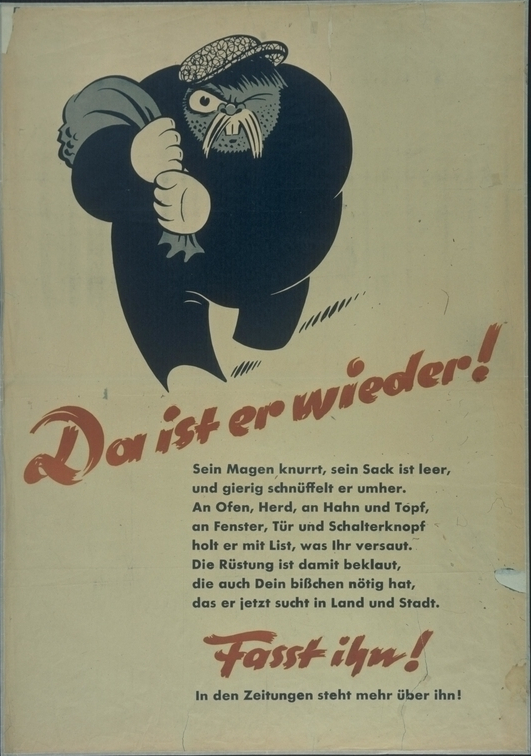Source

Source: Poster, 1943. Artist: Johannes Landwehrmann. Bundesarchiv Plak 003-023-088.
By 1942, the ongoing war effort and domestic demands made it increasingly difficult for the government to maintain its supply of a variety of resources, especially fuel, to homes and businesses. Coal posed a particular problem, as it was required to heat the furnaces and smelters of Germany’s industrial factories, as well as the majority of homes. The Propaganda Ministry had long used a number of subordinate offices to conduct public campaigns encouraging Germans to curb their use of a variety of consumer goods, and during the war these efforts intensified. The placard below was intended to remind Germans of the scarcity of resources and the priority given to war production. More than merely calling on Germans to conserve coal at home or at work, this poster discouraged the private use of coal altogether. The “Coal Thief” depicted here sent a clear message: misusing coal was tantamount to stealing from the war effort. The “thief” (as a symbol for waste) was described in a nearly animalistic manner, suggesting “His stomach growls, his sack is empty, and he sniffs around greedily,” waiting “at the furnace, stove, window or door.” The poster borrowed from the urgency and paranoia of other propaganda to make a clear connection between coal’s misuse and traitorous behavior. The campaign was largely unsuccessful, suggesting that by this time Germans believed they were already sacrificing to the greatest extent possible.

Source: Poster, 1943. Artist: Johannes Landwehrmann. Bundesarchiv Plak 003-023-088.